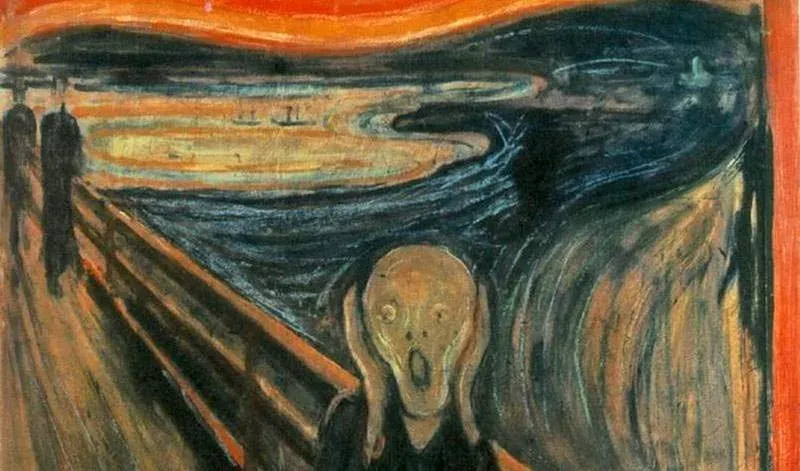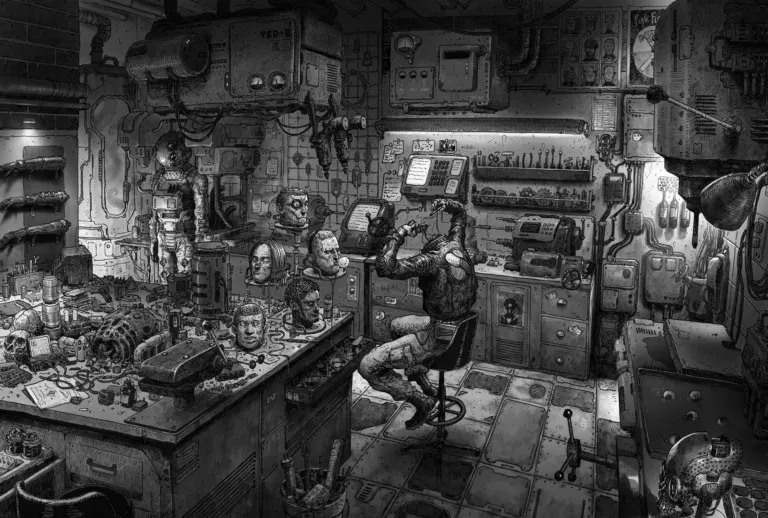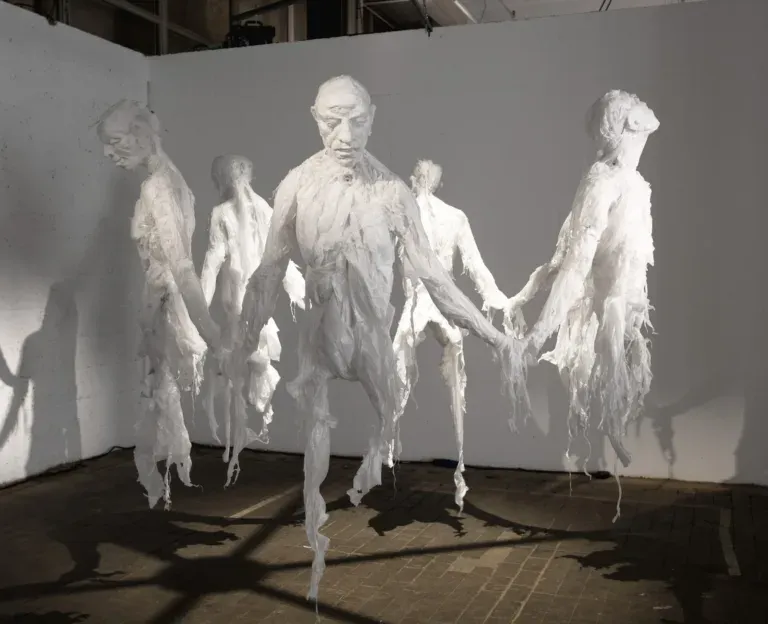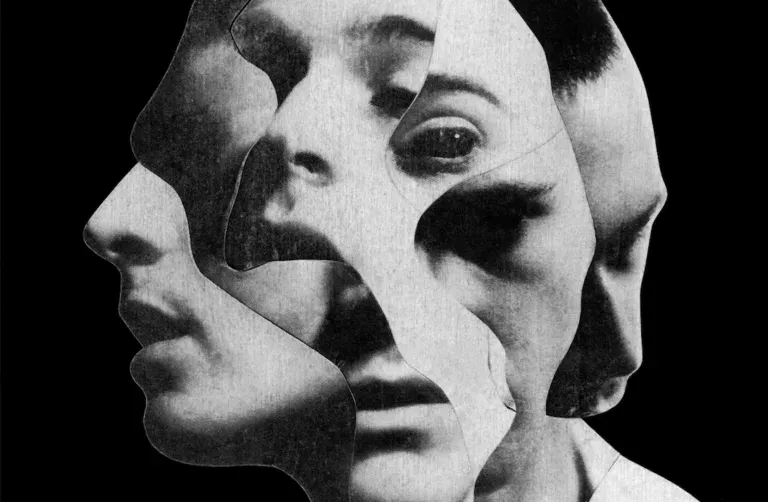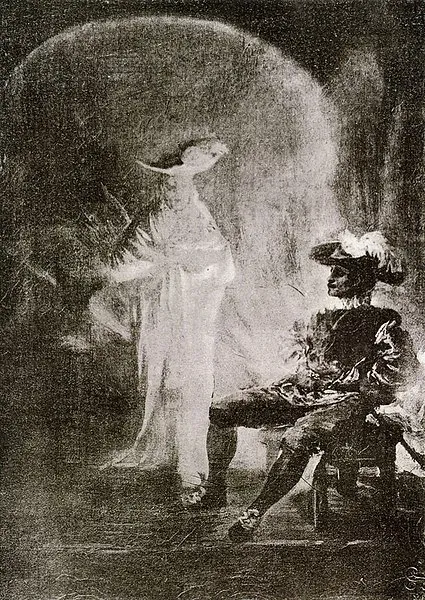The Scream
“The Scream” (1893) by Edvard Munch is one of the most iconic and recognizable works of art of the 20th century.
It depicts a solitary human figure on a bridge, with hands holding its face in a pose expressing a desperate scream. The work has become a universal symbol of anguish and alienation, subject to numerous interpretations and analyses.
Munch created several versions of the painting over the years, including a woodcut in 1895 and a color lithograph in 1899.
However, it is the original oil on canvas version, measuring approximately 91 x 73.5 cm, that is the most famous and significant.
The work is displayed at the National Gallery in Oslo, Norway, but has been featured in numerous exhibitions and loans worldwide.
Munch painted “The Scream” during a period of great personal and creative turmoil.
In 1892, Munch’s older brother, Sophie, died of tuberculosis at the age of just 30, and the painter’s father died shortly thereafter.
Munch himself suffered from severe mental health problems, including anxiety, depression, and hallucinations. Additionally, his relationship with Tulla Larsen, a married woman, was falling apart.
All of this led to a creative crisis for the painter, who produced works exploring anguish, loneliness, and alienation.
“The Scream” was created during this turbulent period and represents the pinnacle of Munch’s quest to depict existential anguish. The human figure on the bridge is depicted in a contorted position, with hands covering the ears and the mouth open in a silent scream. The landscape around the figure is equally unsettling, with red clouds and a curved, angular bridge.
These elements combined create a sense of unease and disorientation that has become Munch’s trademark.
Interpretation of the painting “The Scream” has been the subject of numerous debates and theories.
One of the most common interpretations is that the work represents the feeling of alienation and isolation of the modern individual. The bridge represents the boundary between civilization and nature, while the solitary figure on the bridge is an individual who feels isolated and alienated from society. The red sky represents a sense of anguish and a world collapsing around the individual.
Another interpretation of the painting is that it represents Munch’s fear of death. The human figure on the bridge could represent an individual confronting their own mortality, with the hand covering the mouth symbolizing the fear of dying and the despair of being unable to prevent it. The silent scream could represent an awareness of the inevitability of death, and the individual’s struggle against this reality.
Others have interpreted the painting as a representation of the anxiety and despair caused by mental illness. Munch himself suffered from mental health problems, and many of the elements of the painting could be interpreted as symbols of his hallucinations and fears. For example, the red sky could represent a sense of paranoia or fear of divine judgment, while the curved, angular bridge could represent the confusion and irrationality of mental illness.
Despite its apparent simplicity, “The Scream” is an extraordinarily complex and layered work. The combination of realistic and symbolic elements creates a sense of tension and unease, and the solitary figure on the bridge represents the essence of the human condition: loneliness, alienation, and the struggle against despair and death.
In addition to its significance as a work of art, “The Scream” is also an important historical testimony. It was created at the end of the 19th century, during a period of great social, cultural, and political change in Europe. Society was becoming increasingly urban and industrialized, and many individuals felt alienated and isolated from society. In this context, “The Scream” represents an artistic and philosophical response to the human condition of the time.
In conclusion, “The Scream” by Edvard Munch is one of the most important and recognizable paintings of the 20th century. It represents the human condition of alienation, loneliness, and despair, and the individual’s struggle against death and mental illness. The painting has been subject to numerous interpretations and analyses, and continues to have a significant impact on popular culture and contemporary art.
“There are many ways to die, but there is only one death that matters, and it is the one we encounter in despair.” – Edvard Munch

